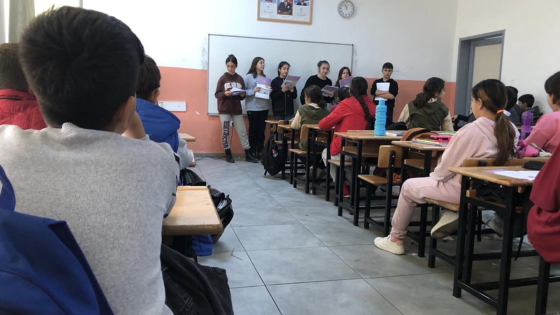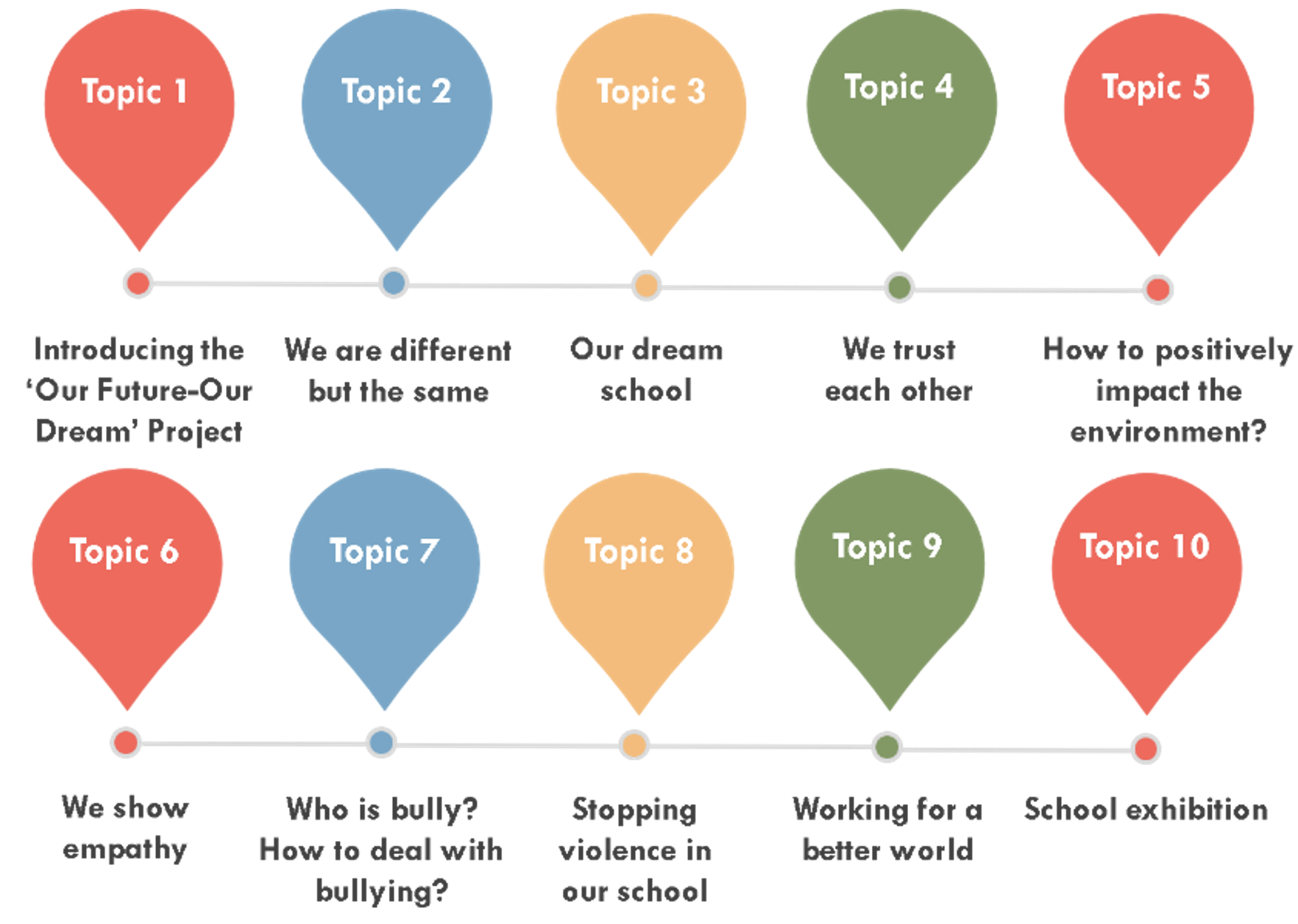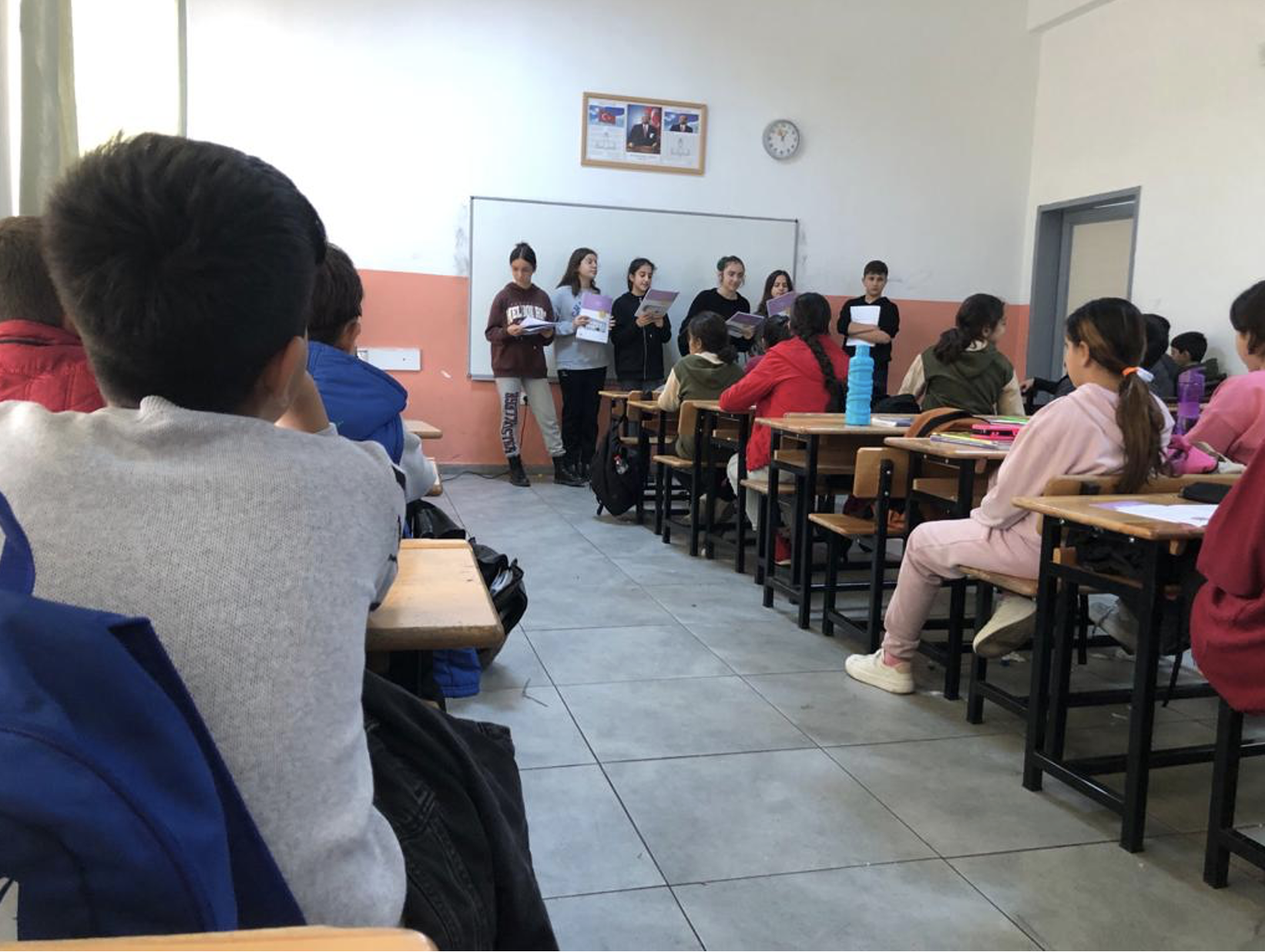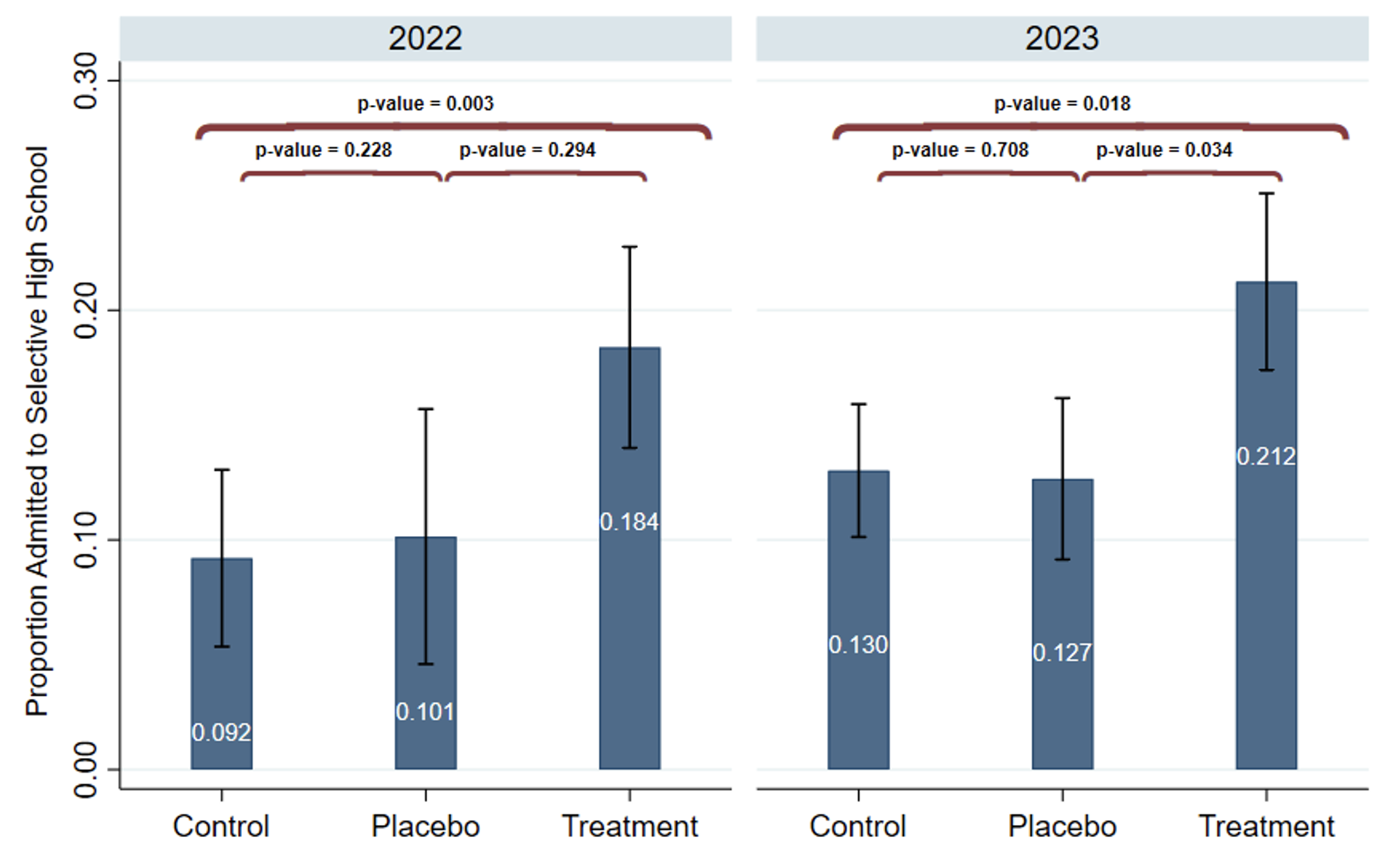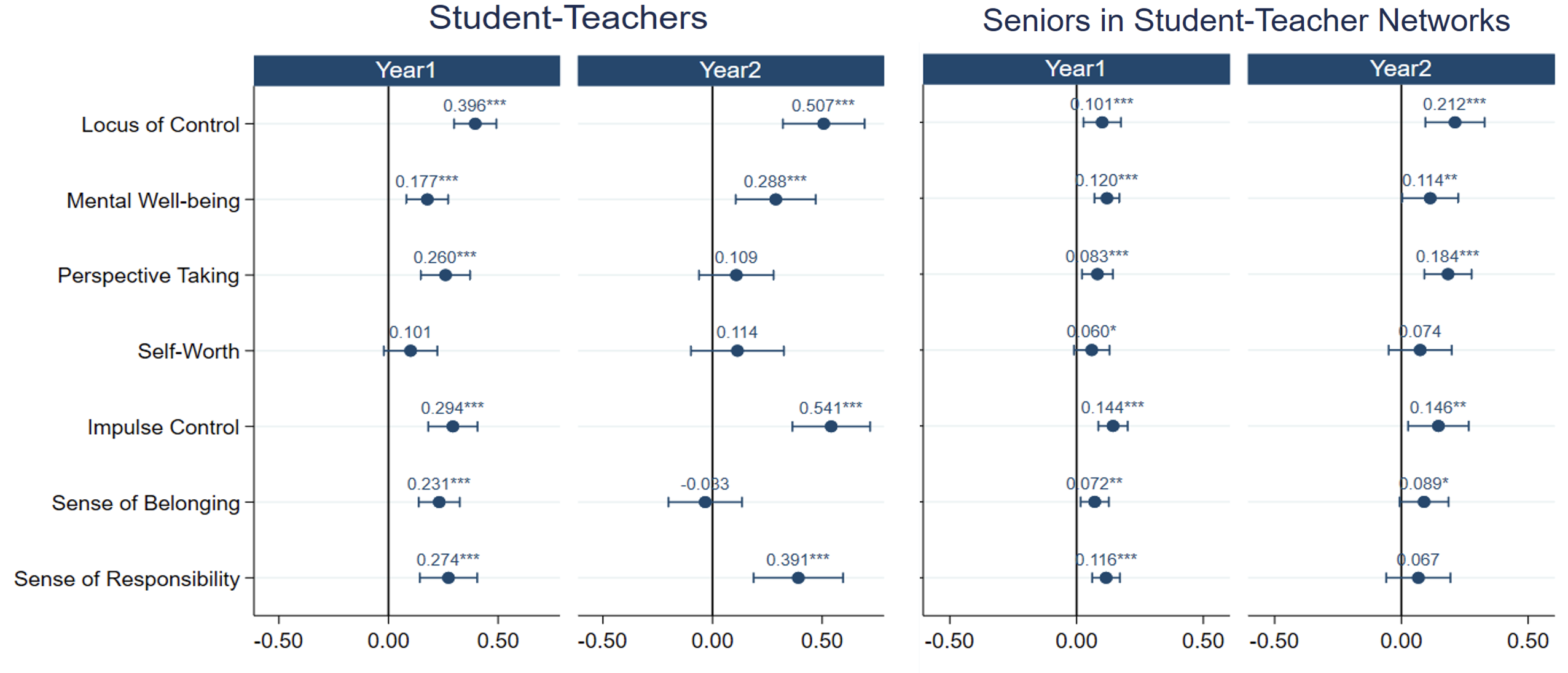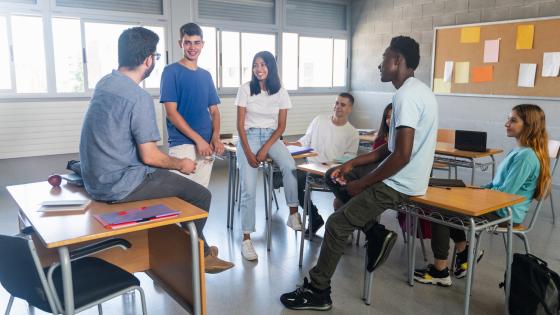Growing up in disadvantaged neighbourhoods can have detrimental effects on children’s cognitive, social, and emotional development (Sharkey 2010, Chetty et al. 2018, Chyn and Katz 2021, List et al. 2023). Within such environments, adolescents are particularly susceptible to internalising detrimental norms and behavioural patterns as they are in the process of developing their self-concept and social identity (Andrews et al. 2021, Dahl 2004). Given the often-limited quality of parental input in these contexts, schools emerge as vital societal institutions to provide children with the tools to neighbourhood disadvantages.
While school-based interventions have shown significant success in improving life outcomes for children, their effectiveness among adolescents remains equivocal. Studies show that interventions targeting adolescents tend to fail when they do not align with adolescents’ desire to feel respected and be granted social status (Yeager et al. 2019). Our in-depth qualitative work in Turkey has produced similar insights: adolescents are reluctant to engage with traditional lecture-based programmes and are resistant to prescriptive lecturing by adults about how to behave.
Our Future, Our Dream: A programme delivered by students
Based on the insights we gathered from our qualitative work with middle school students identified as ‘challenging’ by school authorities, we developed an empowerment programme to be implemented in disadvantaged middle schools in Southeast Turkey. The programme was designed based on two core principles. First, approaching adolescents with respect by entrusting them with responsibilities will help them develop a healthy self-concept and empower them. Second, fostering self-persuasion, rather than direct lecturing, has a higher chance of achieving the desired behavioural changes in adolescents with limited trust in adults around them. Our approach involved assigning full responsibility to select senior students (7th and 8th graders) to deliver an empowerment curriculum to their junior peers. The curriculum, termed as ‘Our Future, Our Dream’, consists of nine thematic modules to be delivered in 15-20 weekly sessions during school hours (see Figure 1).
Figure 1 The ‘Our Future, Our Dream’ curriculum
To deliver the programme, we selected senior students who were centrally located in friendship and popularity networks and have high emotional intelligence. These intellectually promising and occasionally behaviourally challenging senior students were designated as ‘student-teachers’. They were tasked with delivering the curriculum to junior students (5th and 6th graders) during school hours. Figure 2 illustrates a session in which student-teachers (in front of the white board) present the topic of the week to junior students. We expected that targeting disadvantaged adolescents by tapping into their desire for autonomy and leveraging the power of self-persuasion would enhance their socio-emotional wellbeing and their awareness of the world and opportunities around them.
Figure 2 Programme implementation by student-teachers
Evaluation design and study timeline
In a new paper (Alan and Kubilay 2024), we test the effectiveness of this indirect behavioural targeting programme. We launched the study in the 2021-2022 academic year, covering over 20,000 students from 65 middle schools in Diyarbakir, Turkey. We randomly assigned 32 schools to the treatment group and 33 to the control group. We further randomised the control group and allocated 16 schools to a pure control group and the remaining 17 to a placebo control to rule out a mere interaction mechanism due to the programme delivery. In placebo schools, student-teachers delivered an unrelated curriculum consisting of colouring, solving mazes, and finding hidden objects in pictures. We conducted two rounds of follow-up data collection, first at the end of the 2021-2022 academic year and then at the end of the 2022-2023 academic year.
Outcomes measuring a school climate, adolescent empowerment, and socio-emotional wellbeing
We use a rich toolkit encompassing administrative records, an incentivised behavioural game, surveys, and cognitive to evaluate the programme.
Social climate indicators
- Disciplinary flagging (administrative records). This is disciplinary flagging administered by the school for high-intensity violence and anti-social behaviour.
- A third-party punishment game (an incentivised experimental game). We randomly assigned students to groups of three. In each group, there are two players and one observer. The players compete in a real-effort task, in which they collect points for each successfully completed task. After they complete the task, we give them the option to transfer their opponents’ points to themselves. Transferred points represent the level of anti-social behaviour. After players make their decisions, the observer has the option to punish players by looking at their transfer behaviour. The punishment, however, is costly to the observer. The gift points sacrificed to punish players, represent the desire to punish anti-social behaviour.
- Perceived social environment. We collected perceived behavioural norms and perceptions of adult behaviour using item-response questionnaires.
- Inter-grade support networks. We elicited social networks by asking students to nominate at most three schoolmates who provide emotional support. Using this information, we assess whether the intervention increased the prevalence of support from our target senior groups to juniors, i.e. inter-grade support ties.
Academic achievement and socio-emotional wellbeing
- Admission to selective high schools (administrative records). Each year, students at grade 8 take a nationwide exam to gain admission to the country’s selective high schools. Selective high schools offer numerous advantages to students, including well-equipped lab and sports facilities and high-quality teaching staff. Graduates from these schools have much better chances of admission to good universities. We gained access to information on whether a student in our sample is admitted to a selective high school.
- Empowerment and socio-emotional wellbeing (self-reported survey questions). We measure locus of control, mental wellbeing, self-worth, perspective-taking, impulse control, sense of responsibility, and sense of belonging. These attributes together partially capture the markers of adolescent empowerment and socio-emotional wellbeing.
Results
We find that the programme is highly effective in improving school climate and targeted individual outcomes. As intended, the positive effects we estimate primarily stem from the targeted subgroups, i.e. treated student-teachers and their networks. We find that student-teachers and their networks are significantly less likely to receive disciplinary flagging. We estimate a 70.7% (55%) decline in the probability of disciplinary flagging in the first (second) year of the programme for student-teachers. The results from our incentivised experiment are in line with these findings: treated student-teachers are less likely to act in an anti-social manner, as indicated by fewer transfers in the third-party punishment game. They also sacrificed significantly more gift points to punish unfair behaviour than the students in the control group.
More evidence of improved social climate comes from elicited support networks. We estimate a significant increase in inter-grade support ties within treated schools. Specifically, treated juniors are significantly more likely to nominate senior students as supportive peers than their control group counterparts. Consistent with this, we find that perceived behavioural norms significantly improved in treated schools, with no consistent improvement in the perception of adults. We can rule out a mere interaction mechanism generated by the program’s delivery mode using our placebo arm for most outcomes.
Finally, we investigate whether the programme impacts targeted senior students' academic trajectory. Figure 3 shows the proportion of 8th-grade student-teachers who gained admission to a selective high school in 2022 and 2023. About 9.2% and 13% of student-teachers gain admission in 2022 and 2023, respectively. The proportions admitted in the treatment group are significantly higher in both years. Specifically, 18.4% and 21.2% of treated student-teachers were accepted to selective high schools in 2022 and 2023, respectively.
Figure 3 Admission to selective high schools
Enhanced empowerment and socio-emotional wellbeing as potential mechanisms
What exactly did this intervention change in these adolescents? We argue that the content of the empowerment curriculum and the way it was delivered were responsible for generating these positive changes. By repeatedly deliberating and conveying the positive messages provided in the curriculum, student-teachers became empowered and felt accountable for their social environment. Figure 4 plots the estimated treatment effects on various empowerment indicators and socio-emotional well-being for student-teachers and their networks. We observe substantial improvements in nearly all these attributes for student-teachers, substantiating our mechanism claims. Moreover, we find similar positive effects on student-teacher networks, confirming the programme’s robust spillover effects.
Figure 4 Treatment effects on socio-emotional wellbeing
Conclusion
We test the effectiveness of an indirect behavioural targeting programme aligned with adolescents’ desire for autonomy and social status. We find that the programme reduces disciplinary incidents, anti-social behaviour, and tolerance of anti-social behaviour among targeted students and their friendship networks, while fostering supportive network ties between senior and junior students. The programme also increases the likelihood of admission to selective high schools. Our results suggest that these positive effects on school climate and academic achievement may be attributed in part to a substantial improvement in the socio-emotional wellbeing of the targeted students. Our study provides insights into cost-effective ways to empower adolescents and help them escape the disadvantages of their neighbourhoods.
References
Alan, S and E Kubilay (2024), “Empowering Adolescents to Transform Schools: Lessons from a Behavioral Targeting”, CEPR Discussion Paper 18735.
Andrews, J L, S P Ahmed and S-J Blakemore (2021), “Navigating the Social Environment in Adolescence: The Role of Social Brain Development”, Biological Psychiatry 89(2): 109–118.
Chetty, R, J Friedman, H Hendren, M R Jones and S Porter (2018), “The Opportunity Atlas: Mapping the childhood roots of social mobility”, VoxEU.org, 6 November.
Chyn, E and L F Katz (2021), “Neighborhoods Matter: Assessing the Evidence for Place Effects”, Journal of Economic Perspectives 35(4): 197–222.
Dahl, R E (2004), “Adolescent Brain Development: A Period of Vulnerabilities and Opportunities, Keynote Address”, Annals of the New York Academy of Sciences 1021(1): 1–22
List, J, F Momeni, M Vlassopoulos and Y Zenou (2023), “The influence of neighbourhoods on early childhood development”, VoxEU.org, 14 June.
Sharkey, P (2010), “The acute effect of local homicides on children’s cognitive performance”, Proceedings of the National Academy of Sciences of the United States of America 107(26): 11733–11738
Yeager, D S, R E Dahl and C S and Dweck (2018), “Why Interventions to Influence Adolescent Behavior Often Fail but Could Succeed”, Perspectives on Psychological Science 13(1): 101–122.
